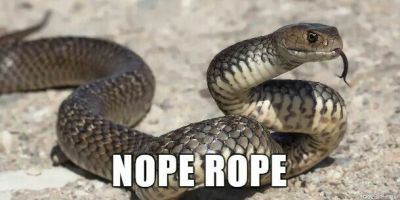You may think that humans have found every animal there is to find. Other than the monsters at the depths of the ocean, what animal could possibly be elusive enough to evade human reach? How can we still be finding out new and exciting things about the animal kingdom?
You may be surprised to know that roughly 15,000 and 18,000 new species are identified each year – with about half of those being insects. A new frog species was even found in NYC recently of all places. A lot of these discoveries happen in stages, especially in places like Africa or Cuba. Many areas can be non-accessible, sometimes for years, because of political tensions. When these areas open back up and are safe, they sometimes prove to be great hiding places for new species.
Get our ‘Animals of the world’ shirt, featuring the Danger Noodle, only available in our store!
These high numbers do involve some misleading discoveries, though. These ‘new species’ include the correction of taxonomic mistakes, movements from one family to another, and decisions that will end up being changed in years to come.
Some species resemble each other so closely, that their differences can only be detected through DNA testing. Atlas Obscura tells us of a misguided breeding attempt:
Zoologists at the National Zoo in Washington, D.C. actually spent years being frustrated about their resident olinguitos’ inability to mate. But the olinguito is a small carnivore in the raccoon family, commonly confused with its identical-looking cousin the olingo. They were trying to mate the olinguito with an olingo, not realizing that it was an entirely different species.
Regardless, that’s a lot of new species. We don’t hear a lot about most of these, but one in particular was found in a very unusual manner. This new nope was found in the belly of another nope.

Or what brave herpetologists would say – a new species of snake was found in the belly of a coral snake, a species known for its adept ability at hunting other snakes, shown here:

National Geographic gives us the details:
Newly described in a recent paper in the Journal of Herpetology, the creature has been dubbed Cenaspis aenigma, which translates to “mysterious dinner snake.” The name derives from the Latin cena (dinner), aspis (a snake variety), and enigma.
This species has unique features that separate it from its relatives, including the shape of its skull, the covering of its hemipenis—its reproductive structure—and the scales under its tail.
Jonathan Campbell, a herpetologist at the University of Texas at Arlington who led the research team says that the snake has never been found alive and they can’t be sure of its habits or its diet. However, the belief is that this is a burrowing snake that likely feeds on insects and spiders, which is an assumption based on the features of it’s skeleton and teeth.
This new species of snake is unique. So unique in fact, that not only is it classified as a new species, it’s also classified as a new genus. Here’s a little table from Pediaa to show you the difference, if you’re unsure:

These differences are recounted by National Geographic as such:
The underside of the creature is adorned with three series of triangular blotches that make irregular stripes; very few New World snakes have similar striping. It also has 14 short, stout teeth in its upper jaw; most members of its family have more or less than that.
But Cenaspsis’s hemipenes are its most bizarre attribute. Most of its relatives have hemipenes festooned with spines along the organ’s body, some decorated at the end with cup-like structures called calyces. The new species’ appendage is spineless, and absolutely covered in calyces, making it look like some kind of otherworldly honeycomb.
In other words: There is no spine running alongside the snake’s dual penises. What a mental image, eh?
Though this 10 inch snakes was found post-mortem, there is hope that one day researchers will find a live specimen. It’s believed that they are still inhabiting tropical Mexico, they’re just really good hiders.
Snakes in hats make my day. 😂 #snakes #noperope #cute pic.twitter.com/Gcd8XLMNe6
— Amanda Marie (@manderpanders35) July 30, 2018
Drawing arms on snakes is how you make them less terrifying #snakes #snake #cartoon #cute #animal #animals #nature #funny #draw #unknown #education #science #know #didyouknow #facts #megamuze #amazing #awesome #world #worldfacts #trivia #learn #educate #knowledge #factoftheday pic.twitter.com/nb4fPMvTGC
— MegAmuze (@mega_factz) December 3, 2018
Theory the birth of dinosaurs .. lol 😆#funny #PictureOfTheDay #impossible #RockOfAges #snakes #elephant pic.twitter.com/toVHvY7Nmv
— NINA 🌹 (@n_rocks88) September 22, 2018








Comments
Loading…
Loading…
Comment using Facebook